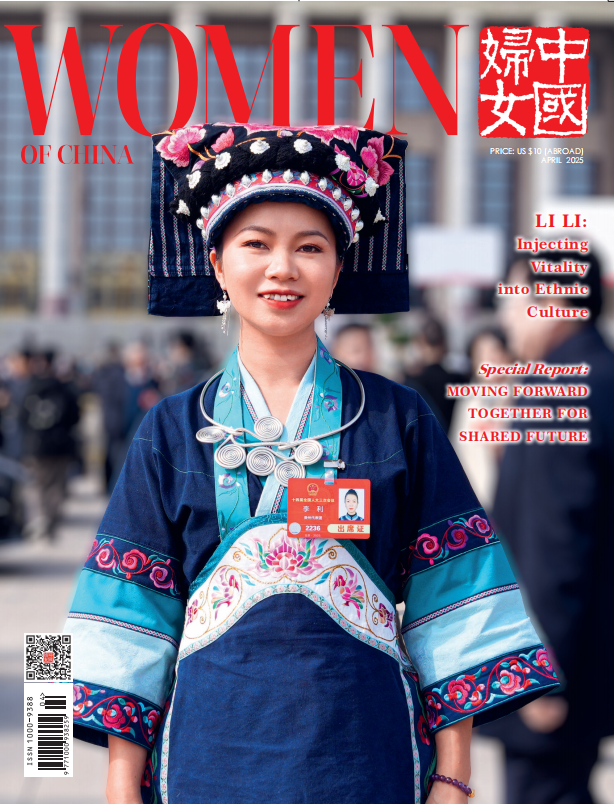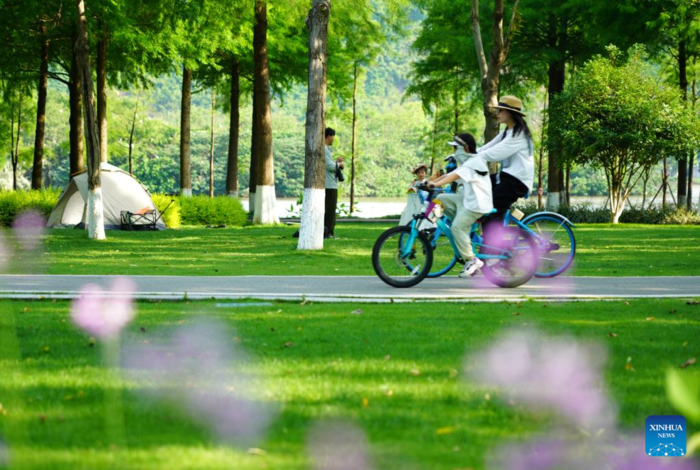New Museums Explore Xinjiang's Ethnic Unity, Ancient Chinese Roots
URUMQI, May 18 (Xinhua) — China opened two new museums in the northwestern Xinjiang Uygur Autonomous Region on Sunday, showcasing artifacts that highlight the region's rich history as a hub of ethnic integration and cultural exchange, as well as the diversity of Chinese civilization.
One of the museums, the Museum of the Western Regions Frontier Command in Luntai County, stands on the site of a Western Han Dynasty (202 BC-8 AD) protectorate first established in 60 BC to govern the Xinjiang area, which marked the official incorporation of the area into the Chinese territory.
Spanning 5,120 square meters of exhibition space with galleries divided into five sections, the museum features more than 460 artifacts (some grouped as sets) including pottery, bronze and iron wares and silk fragments. It uses immersive exhibits such as multimedia reconstructions of ancient scenes to illustrate how imperial Chinese authorities governed Xinjiang and fostered cultural exchange over two millennia.
In 2018, with approval from the National Cultural Heritage Administration, a joint archaeological team from Peking University's School of Archaeology and Museology and the Xinjiang Institute of Cultural Relics and Archaeology launched excavations at the Zorkut site in Luntai.
Professor Chen Ling from Peking University explained that the unique triple-walled structure of the Zorkut ancient city ruins, along with the discovery of Han Dynasty-style building materials and valuable artifacts, provided key evidence that it was the seat of the Western Regions Frontier Command.
Through the latest archaeological findings and unearthed artifacts, the museum reveals how the Xinjiang area evolved under successive central governments amid enduring interaction, cultural exchange and integration among ethnic groups in the area, said Chen Ying, head of the bureau of cultural heritage of the Mongolian Autonomous Prefecture of Bayingolin, where Luntai is located.
Turgun Jelili, a villager from the nearby town of Karabag, said he felt extremely proud to see such a modern museum in his home region. "The architecture is stunning, and the exhibits are truly impressive. It left a deep impression on me," he said, adding that he plans to bring his daughter to visit soon.
Also on Sunday, Luntai inaugurated the Zorkut ancient city archaeological park, creating an integrated cultural experience for visitors to explore both museum treasures and the actual ruins.
In Kuqa City, some 100 kilometers west of Luntai, the newly constructed Qiuci Museum commenced its public opening on the same day, housing 700 cultural relics (some grouped as sets), among which 96 fall under China's three-tiered heritage protection system, including a Tang Dynasty (618-907) stone Buddha carving, Qiuci manuscripts, a silver coral-beaded veil and a painted clay sculpture.
The museum, named after the ancient kingdom of Kucha ("Qiuci" is its Chinese pinyin form), features galleries exploring Kucha's legacy through its history, urban development and Buddhist art displays, plus rotating special exhibitions.
The ancient Kucha region, centered on present-day Kuqa City, spanned the mid-southern foothills of the Tianshan Mountains and the northern rim of the Tarim Basin. Since the Han Dynasty (202 BC-220 AD), this strategic crossroads served as both a military-administrative hub for Chinese governance in the Western Regions and a cultural melting pot where Eastern and Western civilizations converged, according to Feng Wei, vice curator of the museum.
The region preserves the extraordinary cultural heritage that embodies the enduring historical ties between the Western Regions and the central plain areas, once the heartland of ancient China, Feng noted.
Statistics from the regional culture and tourism department show that Xinjiang's 150 registered museums received over 13 million visits in 2024, 3.5 million of which were from young people.
(Source: Xinhua)
Editor: Wang Shasha
Please understand that womenofchina.cn,a non-profit, information-communication website, cannot reach every writer before using articles and images. For copyright issues, please contact us by emailing: website@womenofchina.cn. The articles published and opinions expressed on this website represent the opinions of writers and are not necessarily shared by womenofchina.cn.








.jpg)

 WeChat
WeChat Weibo
Weibo 京公网安备 11010102004314号
京公网安备 11010102004314号